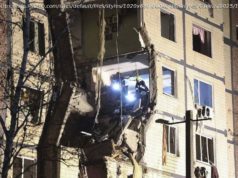Here’s why these eruptions are so different — and why they have drastically different death tolls:
Lava vs. pyroclastic flow
Kilauea’s primary mode of destruction is lava, but Fuego has unleashed pyroclastic flow — a nasty mix of ash, rock and volcanic gases that can be much more dangerous than lava.
In Guatemala, pyroclastic flow from Sunday’s eruption topped 1,800 degrees Fahrenheit (about 1,000 degrees Celsius), CNN meteorologist Ivan Cabrera said.
“This eruption at Fuego was explosive, sending hot debris down the steep sides of the volcano to make the pyroclastic flows,” said Erik W. Klemetti, associate professor of geosciences at Denison University.
He said pyroclastic flows can tumble down a volcano at hundreds of kilometers per hour — way faster than what people and even cars could outrun.
In pictures: Guatemala volcano erupts
By contrast, Kilauea produces lava, or sticky, molten rock, that typically creeps along at maybe hundreds of meters per hour — not nearly as fast as devastating pyroclastic flow.
Different communities
Kilauea is within Hawaiʻi Volcanoes National Park. Lava has destroyed dozens of homes and other structures in communities outside the park boundaries.
But the Fuego volcano erupted near densely populated areas.
“Villages are right on the foothills of the mountain,” Cabrera said. “So they had no time (to escape).”
That meant unsuspecting villagers — such as those in the community of El Rodeo — were suddenly overwhelmed by ash, lava fragments and gases speeding toward them at 435 mph (700 kph).
Different long-term effects
In both the Kilauea and Fuego areas, “the land will be unusable for years,” Klemetti said.
But Guatemala faces a special danger that Hawaii doesn’t.
“The bigger issue with pyroclastic flows is they can be turned into volcanic mudflows (lahars) when the loose debris mixes with rain/river waters,” he said. “That is the new danger at Fuego right now.”






